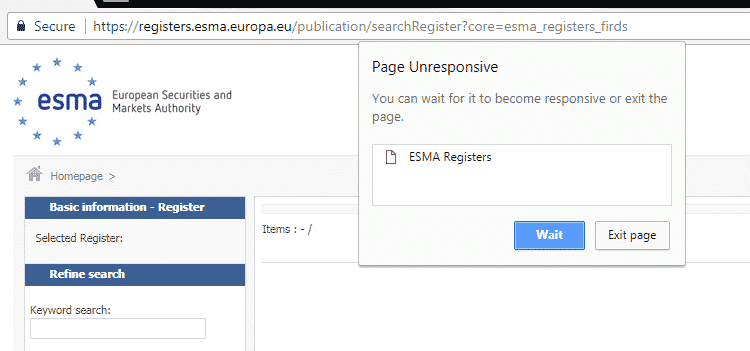The launch of Bitcoin in 2009 was undoubtedly a defining moment for the modern financial industry. The biggest of all cryptocurrencies, BTC is the brainchild of a visionary computer scientist (possibly) who launched the coin under the pseudonym “Satoshi Nakamoto.” Nakamoto published the legendary Bitcoin whitepaper in 2008, and the coin was officially launched on January 3, 2009.
The main ethos behind Bitcoin
Bitcoin was launched with the vision to present a new P2P decentralized electronic cash based on state-of-the-art Blockchain technology. Bitcoin isn’t governed by any government or a central authority or even a financial institution. Bitcoin has a limited supply (21 million), and the coins are generated through a process called mining. Bitcoin miners have to solve challenging computational problems and are rewarded with newly generated Bitcoins upon successful completion of these problems.

Sydney Ifergan
Source: LinkedIn
As Bitcoin is backed by a decentralized infrastructure, no single authority can control or own the coin. All BTC transactions are stored in a global decentralized blockchain ledger, which is immutable and guarded by cutting-edge encryption. Thus, BTC transactions can’t be censored or altered ever, which makes it safer than regular fiat money. During its historic launch, Bitcoin also promised faster transactions worldwide and at lower fees compared to regular cash transaction systems.
Bitcoin problems leading to hard fork and BCH
Bitcoin was launched with a block size limit of 1 MB. The initial developers stuck to the 1 MB limit to eliminate risks of spam transactions that might jam pack the whole BTC network. But that very limitation started creating issues in the Bitcoin network over time.
With Bitcoin rising in popularity, the volume of transactions began to increase dramatically over time. And that 1 MB block size seemed to be inadequate to handle the growing numbers of transactions every day. Bitcoin could only manage 4.4 transactions a second, and that limit left numerous users waiting in line. Many of them were forced to pay higher fees to get their transactions prioritized over others.
The crisis created an uproar in the BTC community, with one group demanding an immediate hard fork. It wanted to enhance block size through a hard fork so that the network could handle more transactions per second and keep the costs low. Roger Ver, popularly dubbed “Bitcoin Jesus,” was the spearhead of the Bitcoin community group that demanded an increase in block size. His argument was that Bitcoin had strayed from its primary vision and was fast becoming a “reserved currency” with such expensive transaction fees. He wanted Bitcoin to stay the everyday currency that was outlined in the original BTC whitepaper.
The debate finally culminated in a Bitcoin hard fork in 2017, which led to the creation of Bitcoin Cash or BCH. Roger Ver, the former CEO of Bitcoin.com, is one of the chief advocates of Bitcoin Cash. BCH was developed with an 8 MB block size to handle an increased amount of transactions per second compared to BTC and all that with far lower fees. As a result, BCH seemed to be affordable as a regular currency for Payments of goods and services. Over time, the limit of BCH's block size has been raised to 32 MB.
BCH split and Bitcoin SV
In 2018, the BCH community witnessed a serious “civil war” between two competing camps that led to a split in BCH and the formation of Bitcoin SV (Satoshi Version). The first group was led by Ver and Bitmain’s Jihan Wu while the other one (that advocated for SV) was headed by computer scientist Craig S Wright, as well as business tycoon Calvin Ayre. According to Wright’s group, BCH too strayed from its original values and was fast becoming a “reserved currency.” It calls for an immediate split to create a version that would embody the actual vision of Nakamoto, as outlined in his BTC whitepaper.
Bitcoin SV was launched in November 2018 with a huge block size limit of 128 MB. The massive block size allows it to handle ever more transactions per second compared to Bitcoin Cash.
Which one to go for?
There is no denying of the fact that the civil war is still on between the BCH and BSV camps. Roger Ver is still emphasizing on the huge potential of Bitcoin Cash while Craig Wright is urging to look beyond BCH and focus on the SV coin. The Bitcoin Jesus recently declared that BCH holds all the potential to witness a 100,000 percent rise in the near future. On the other hand, Craig Wright is tirelessly advocating for the authenticity of SV.
But, despite all the debates and controversies, one thing is clear: both coins show immense potential in the contemporary crypto space. At present, BCH is the 4th largest cryptocurrency, while Bitcoin SV is the 5th one.
Pointless wars
Both BCH and Bitcoin SV show a bright future and are doing an excellent job in BTC adoption and are poised for a brilliant growth in the coming months. Both coins have got solid ground to claim and maintain their niche in the crypto scene. After all, both are working with the same goal in mind — increase BTC adoption and improve the BTC network. it would only be better if both camps join hands to work together. Their liaison will help to bring in the best parts of platforms, which can culminate to bring the ultimate BTC.
Last but not least, one thing is undeniable, and that is that BTC is still and will always remain the public's favorite. No hard fork like BCH or BSV (despite their own unique appeal) can ever rival the supreme command of Bitcoin over the crypto industry and the financial market overall. We can’t forget that every hard fork we have witnessed to date was all about upholding the original ethos of Bitcoin.
Sydney Ifergan is the CEO of The Currency Analytics






















